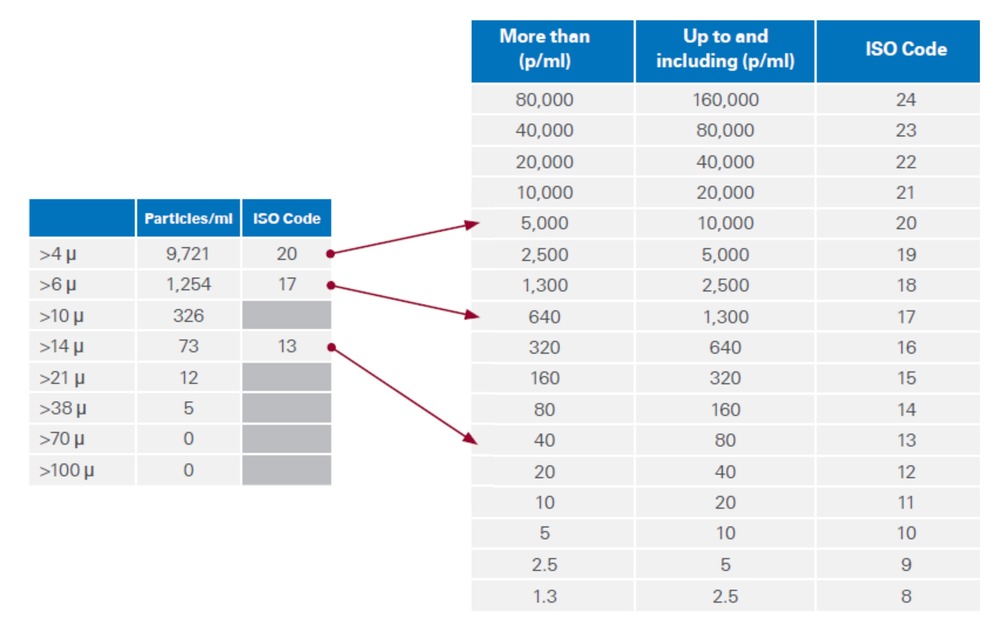The National Aerospace Standard (NAS) 1638 was developed in the 1960s to help control the contamination levels of hydraulic fluid within hydraulic components. NAS 1638 became a standard not only for the aerospace industry but also throughout many other industries as well. The latest version of NAS 1638 is SAE 4059.
Nevertheless, in many areas of industry, NAS 1638 has largely been outpaced by the ISO 4406 standard in recent years. Both NAS 1638 and ISO 4406 focus on the methods for calculating particle counts or solid contamination levels within a fluid.
NAS 1638 represents the counts of particles in five size groups:
5 to 15 microns per 100 milliliters (mL)
15 to 25 microns per 100 mL
25 to 50 microns per 100 mL
50 to 100 microns per 100 mL
>100 microns per 100 mL
ISO 4406:1999 represents the counts of particles in three size groups:
>4 microns per 1 mL
>6 microns per 1 mL
>14 microns per 1 mL
BETA RATIO
The beta ratio (also known as the filtration ratio) is a measure of a filter element's particle-capture efficiency. Therefore, it is a performance rating. Here is how a Beta Ratio is derived from Multipass Test results. Assume that 50,000 particles, l0 µm and larger in size, were counted upstream from the test filter, and 10,000 particles in that same size range were counted downstream from the filter. Substituting in the equation:
βx = (NU)/(ND)
where: x is a specific particle size,
NU is the number of particles upstream, and
ND is the number of particles downstream.
Therefore, β10 = 50,000/10,000 = 5
This result would be read as "Beta ten equal to five." Now, a beta ratio number alone means very little. It is a preliminary step to finding a filter's particle-capture efficiency. This efficiency, expressed as a percent, can be found by a simple equation:
Efficiencyx = 100 (1 - 1/β)
Efficiency10= 100 (1 - 1/5) = 80%
In this example, the particular filter element tested was 80% efficient at removing 10-µm and larger particles. For every five particles in this size range introduced to the filter, four were trapped in the filter media.


